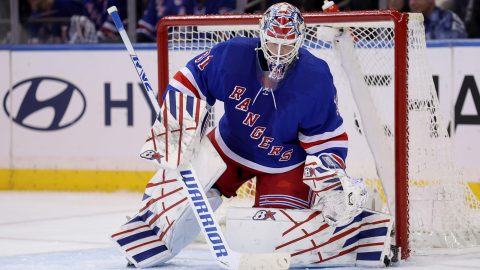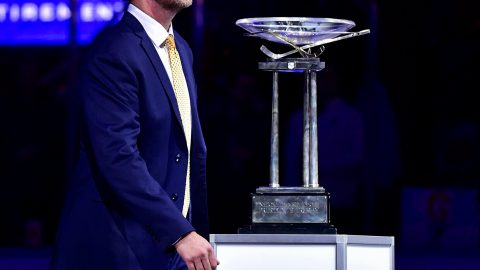NFL economics say that a stud receiving tight end — someone too fast for linebackers to cover and too big for defensive backs — is the most valuable guy in the league. Teams don't have to play a lot for them, mostly because there are so few who fit this bill.
Given the NFL's free-agent rules, salaries of all premium players are tied to the average of what the top five players make at each position. This year, that average for tight ends is $4.46 million. Conversely, the average annual salary of the five highest-paid wide receivers is $9.88 million. A healthy Antonio Gates is as valuable to the Chargers as the top wide receivers are to their respective teams. But San Diego only has to pay Gates 50 cents on the dollar compared to what top wideouts cost their teams.
This is why so few big-time tight ends leave their teams via free agency compared to players at other positions. And that's why getting Tony Gonzalez for a measly second-round pick in 2010 was such a steal for the Falcons.
Teams demonstrate their belief that their tight end is the type who creates mismatches by targeting him (times thrown to).
Last year's tight end target leader was Gonzalez (155, one more than in 2007). Far behind were Jason Witten (120), Chris Cooley (109) and Dallas Clark (107). Where's Antonio Gates? He's behind lesser-known Owen Daniels (Texans, 99) and just ahead of Zach Miller (Raiders, 86) with 92 targets.
But Gates will be the No. 1 tight end on my board because he was hurt all last year with hip, toe and ankle injuries. He's healthy now. And he's also one of the best red zone/end zone weapons at any receiving position.
Gates's 19 red zone targets were tied for third (with the Giants' Kevin Boss, shockingly), behind Gonzalez (22) and Clark (21). Expect a healthy Gates to produce like in 2007 — 117 targets, including 23 in the red zone, which translated to a 75/984/9 TD season.
The sweet spot for fantasy tight end consideration is at least one red zone target per game. After Gates and Boss, only two guys meet that threshold — Greg Olsen (Bears) and Dustin Keller (Jets). You'll have to pay a high price for Olsen, but Keller is cheaper and offers similar hybrid upside, albeit with far more uncertainty at QB.
Chris Cooley only had 10 red zone targets last year, as did Daniels. Desmond Clark had 10 red zone targets, combining with teammate Olsen for 27 at the position. No one talks about Clark cutting into Olsen's action, but there he was getting a TD from Jay Cutler on Saturday night.
Being on the field on third downs is of critical fantasy importance. Last year, just two tight ends were top 20 in third down catches that went for first downs — Gonzalez and Witten (24 and 22, respectively; Roddy White of the Falcons led the NFL with 27). The best bets to be on the field in all passing situations are those guys plus Dallas Clark, Gates, Olsen, Keller, Daniels, Kellen Winslow Jr. (Bucs) and Miller.
Now let's make some tight end recommendations.
Buy
Dustin Keller, Jets: Mark Sanchez, like all young QBs, is going to need a safety blanket between the hashmarks and that guy is going to be Keller, who runs a 4.55 and has great run-after-catch ability. When the matchups are right, Keller will make huge plays deep down the seams.
Zach Miller, Raiders: It's been a perfect storm this summer for Miller. Rookie Brandon Myers has shown he can pass block, which will free up Miller in the passing game in two tight-end sets. Also WR Chaz Schilens (foot) is out at least through September, so Miller is higher in the target rotation than 90 percent of his peers. QB JaMarcus Russell showed signs late last year, too.
Hold
Kellen Winslow, Bucs: Tampa's plan is to put Winslow in the slot on third downs. He had 1,106 receiving yards in 2007 with an unproven QB. So he's capable. But an ankle injury caused him to miss six games last year. His knee problems are reportedly already at the arthritic stage. The upside and downside are well balanced here, so do not reach on draft day.
Sell
Heath Miller, Steelers: He's a ham and egger as a receiver and might be needed to block given the Steelers pass protection woes (29th in sack percentage allowed — 9.7 percent of total attempts). Miller was only targeted 65 times last year — five times per start, which is not enough.
Chris Cooley, Redskins: He's better if you're scoring catches heavily. But Cooley runs short routes, which hurts you in yardage (just 10.2 yards per catch) and in close because teams don't concede the underneath stuff when you're on the doorstep. Cooley lacks the speed (4.75 in the 40) to beat linebackers and safeties down the seam.



